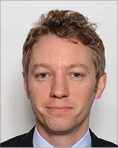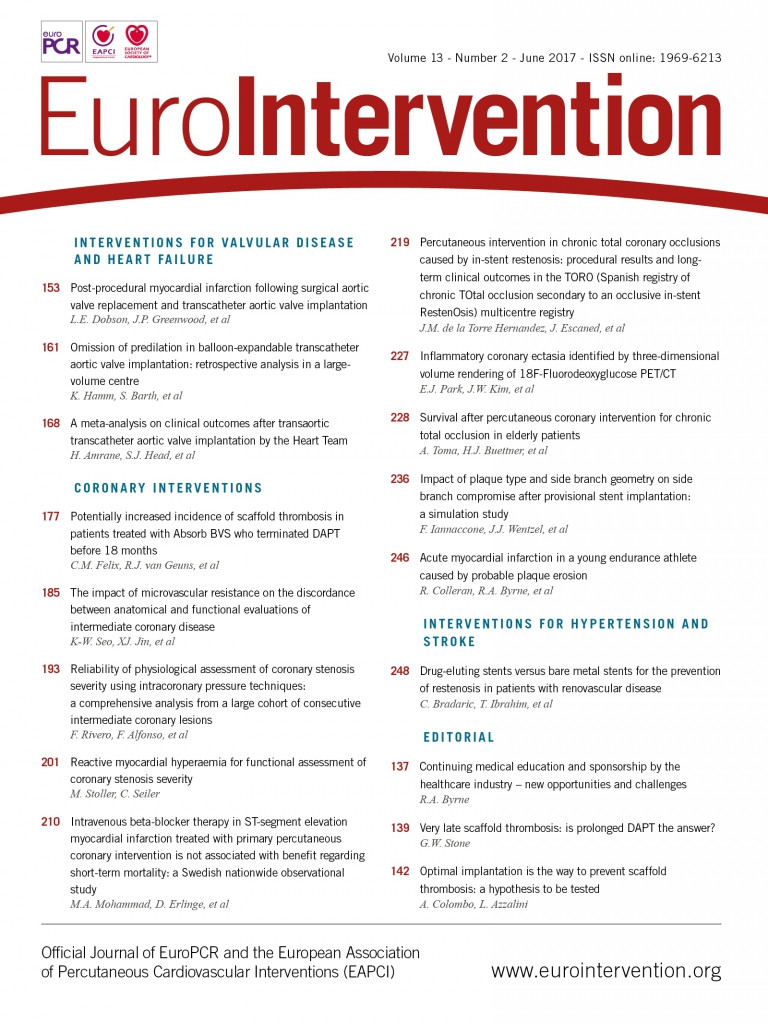
Continuing medical education is a critical activity necessary to ensure the maintenance or development of the skills of physicians and allied healthcare professionals. The goal of continuing education is to ensure the provision of the most up-to-date, highest quality clinical care and the best possible outcomes for the patients we treat every day and every night. Professional medical societies such as the European Society of Cardiology (ESC) support these obligations. In Europe, the costs of continuing medical education are insufficiently supported from governments and employers and have depended to a degree on financial support from industry1.
Recent years have seen the beginning of important changes in relation to the interactions between physicians and other healthcare professionals and industry in relation to sponsorship of continuing medical education in general and attendance at scientific congresses in particular. Readers of these pages will be aware that, for a number of years, the representative association for the medical technology industry in Europe – MedTech Europe – has been developing a new code of conduct, which guides interaction of its members with healthcare professionals, and makes specific recommendations in relation to sponsoring of medical education activities2. This follows other changes in relation to the pharmaceutical products industry in recent years3.
MedTech Europe is a medical industry alliance between the European Diagnostic Manufacturers Association (EDMA), which represents in vitro diagnostics industry members, and Eucomed, which represents the medical device industry. Recently, MedTech Europe published a code of conduct in a 47-page document entitled “Code of Ethical Business Practice”4. The new code came into force on 1 January 2017. It sets out minimum standards relevant for a variety of its members’ activities and interactions with physicians but does not of course supersede laws, regulations or professional codes that may exist at a local or national level.
So what are the key changes in this code that physicians need to be aware of? First, direct sponsorship of individual physicians for continuing medical education is being phased out. In fact, a complete ban will come into force on 1 January 2018 after expiration of a transition period. This means that individual physicians will no longer receive financial support for attendance at organised education events. However, it is important to note that this applies only to third-party organised events – such as those organised directly by healthcare professionals, private companies and professional societies, including for example the European Society of Cardiology Congress or the EuroPCR meeting. Company meetings that are organised exclusively by industry are exempt, and healthcare professionals can be invited by companies to attend with related costs covered. This may apply both to sales/promotional meetings as well as to product/procedure training. Taken together, these developments may result in a shift away from support of independently organised education and towards events which are run directly by industry. Whether intended or otherwise, this outcome could be viewed as anomalous, and arguably counterproductive in efforts to improve the ethical relationship between the medical device industry and the medical profession.
Second, dedicated educational grants may be provided to facilitate continuing medical education programmes. These grants might be provided to professional societies or healthcare organisations and could then be used by these bodies to support individual practitioners’ attendance at educational events, such as scientific congresses. However, the grants are regarded as restricted with conditions attached. For example, they might be used to support certain physicians or healthcare practitioner groups as specified in the grant agreement. In some respects, it might be observed that this transfers the responsibility for management of potential conflicts of interest from the industry to the professional society administering the grant5. In addition, as is currently the case, educational grants might also be used for direct support of events organised by third parties such as individuals or healthcare organisations. Whichever form the grants take, the educational event supported will have to comply with particular MedTech Europe requirements in relation to the programme and content, location and venue, and travel and hospitality. In addition, in relation to transparency, grant support will be centrally disclosed at the MedTech Europe level with regard to educational grants provided to third parties. Individual grant recipients are expected to provide employer notification and in all respects abide by local legislative requirements for reporting.
Third, in relation to research, MedTech members may continue to fund industry-initiated studies including both pre-market studies and post-marketing surveillance (PMS) and clinical follow-up (PMCF) studies. Moreover, investigator-initiated research can be supported through the rubric of educational grants. In addition, scholarship or fellowship grants for training may continue to be provided, as well as grants targeted at increasing public awareness of medical conditions and/or available therapies.
It goes without saying that much of this change is to be welcomed. One of the key aims of the code is to set out a framework for continued collaboration between healthcare professionals and industry. This vital collaboration has underpinned the development and rollout of many novel technologies that have transformed the quality of life and indeed life expectancy of the patients whom we treat in routine practice. Think percutaneous coronary intervention, intravascular imaging, transcatheter valve therapies, mechanical circulatory support and extracorporeal membrane oxygenation. Complex technologies require skilled operators and advanced training. In many situations, the healthcare industry is in the best position to provide such training, often in association with product support; however, this valuable and often legally necessary service should not be confused with independent medical education where the emphasis is on disease and therapy and not on technical product features.
There are, however, a number of important impacts of this decision. Foremost among them is the impact on medical professional societies and their associations. The activities of the ESC, for example, are broad and encompass research and education, advocacy, membership support and organisation of an annual congress. Associations like the EAPCI are usually defined by three key features – their membership, their scientific congress or meeting and their scientific publications. Often, financial support from the attendance fees at the annual scientific meeting provides funding which can be used to support other elements. An obvious consequence of reduced industry support for attendance at congresses is reduced attendance figures and lower revenues. If this support is reduced or removed then support for much needed independent work on standards of practice, independent research data and advocacy programmes will be greatly affected. The challenges are significant, but can be expected to force novel approaches and create new opportunities.
Indeed, in parallel, the ESC like many other professional societies and associations is actively diversifying revenue sources, developing a variety of membership subscription models and novel educational products. New paid membership models provide access to different levels of membership benefits dependent on the level of subscription fees paid. Certain professional society membership or fellowship levels include attendance fees for the annual scientific congress; of course, the costs associated with travel to and accommodation at the congress remain and are not insignificant. Moreover, educational products are evolving, with more and more focus on e-learning, mobile learning (m-cardiology) and web-based medical education. Webinars organised by the society and its associations and rolled out via the society’s website are an increasing part of the educational landscape. In addition, journal subscription fees are another important source of revenue or, better said, potential revenue in the case of EuroIntervention, one of the few medical journals that is not presently located behind a pay firewall. That of course is part of a larger discussion, perhaps a topic for another day. Finally, high-impact educational products also represent opportunities for funding including textbooks, apps and indeed clinical practice guideline-related products.
Of course, each of these developments places more onus on healthcare practitioners with regard to paying for continuing medical education – a condition that is necessary for maintenance of certification in many regions. This calls for new solutions, be they increased support for education by government, healthcare providers or health insurance companies, or tax incentives designed to ensure that some of these costs can be offset by the individual subscribers.
Overall, important changes are taking place in the provision and uptake of continuing medical education by healthcare practitioners. Some of this change will be governed by a new framework for interaction between physicians and other healthcare professionals and the medical device industry. Other changes arise as part of a broader shift towards e-learning and web-based educational activities. One thing seems certain, namely that these changes will gather pace in the years to come. This new era will undoubtedly bring with it significant challenges, but also great opportunities.

